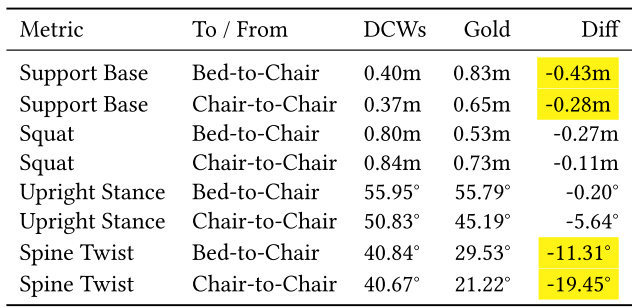The University at Albany in collaboration with a New York City-based Human Condition Safety and Albany-based Living Resources recently completed an exploratory study to detect injury-prone movements of healthcare workers. The study involved tracking seven direct care workers (DCWs) over a one-week period at the Living Resources home health facility in Albany, New York. The results are being used to in the development of wearable motion tracking system to monitor and provide feedback of risky patient lifts and transfers. The Xsens MVN Analyze system was used for the data collection.
Subjects
DCWs employed by nursing and residential care facilities owned by state governments experienced the second highest incidence rate (7.9%) of nonfatal occupational injury and illness. Most commonly (61%) from injuries related to the lifting, repositioning or transfer of care residents [1]. Only workers in rendering and meat byproduct processing owned by private industry had a higher rate (8.3%) of injury [2]. In addition to the obvious detrimental impact to the DCW and patient, the collateral damage of work-related injuries affects home care organizations, the health care system, and the financial community.
The prototype system was tested with different workers (low vs. high experience levels), different types of patients (partially assisted vs. totally dependent) and transfer settings (bed-to-chair and chair-to-chair). In total, seven direct care workers and one highly experienced physical therapist (our gold standard) completed a total of 32 patient transfers. All participants completed a transfer involving moving a completely dependent and partially dependent individual. The partially dependent individual could assist in part of the transfer procedure. All subjects were all tracked during two types of patient transfers from a bed-to-shower chair and from shower chair to wheelchair.
Measurements
The full MVN Analyze system features 17 wearable sensors on each participant, in order to track the major body movements. Sensors were placed on the forehead(1), pelvis(1), shoulders(2), upper arms(2), forearms(2), hands(2), upper legs(2), lower legs(2), feet(2) and one sensor on the back (1) near the T8 vertebrate. All sensors were Xsens motion trackers, which allowed the study subjects to move freely in the real world while movements are captured in a 3D virtual world. The resulting motion tracking data represented in an avatar using 23 anatomical points, as some of the points are interpolated based on the 17 sensor readings. In addition to the motion tracking sensors, 3D video using a Microsoft Kinect was used to verify the accuracy of the sensor readings and for interpretation of the collected data. The second image on the right illustrates the verification.
Experimental Protocol
Common in the biomechanical evaluation of different lifting and carrying techniques are four critical metrics for assessing injury risk. Adoption of these guidelines appears, in general, to minimize the stresses on the disc, vertebra, muscles, and ligaments of the low back and thus reduce the risk of injury [3]. The four metrics include: (1) maintaining a wide support base for stability, (2) performing a squat by bending the legs, (3) maintain an upright stance, and (4) avoiding spine twist. The third image on the right shows these metrics.
Results Analysis
Preliminary results that indicate that improper transfer techniques and body mechanics are commonplace. As depicted in the table below, the gold standard is shown to have consistently better metrics, which indicate patient transfers that have a lower injury risk. The numbers are averages, using 28 DCW transfers and 4 gold standard transfers.

Conclusions
Direct care workers are injured at astonishingly high rates. The majority of these injuries are back injuries that result during patient lifting or transfers. These injuries result in higher worker turnover, increase healthcare costs, and jeopardize the health and safety of both the workers and patients. Wearable technology has matured to the point where it is feasible to mount sensors to automatically detect improper lifting and patient transfer techniques. This study gathered initial results on the feasibility and usefulness of a wearable motion tracking system for alerting workers and supervisors when workers are risking injury based on lifting and transfer movements. Initial results of this exploratory study indicate that workers are often engaging in unsafe practices, which were captured by Xsens motion tracking sensors. The preliminary evidence is encouraging and indicates that a wearable motion tracking system could be an effective new tool in injury prevention
Are you interested our solutions? Please click on the button below to contact us.
